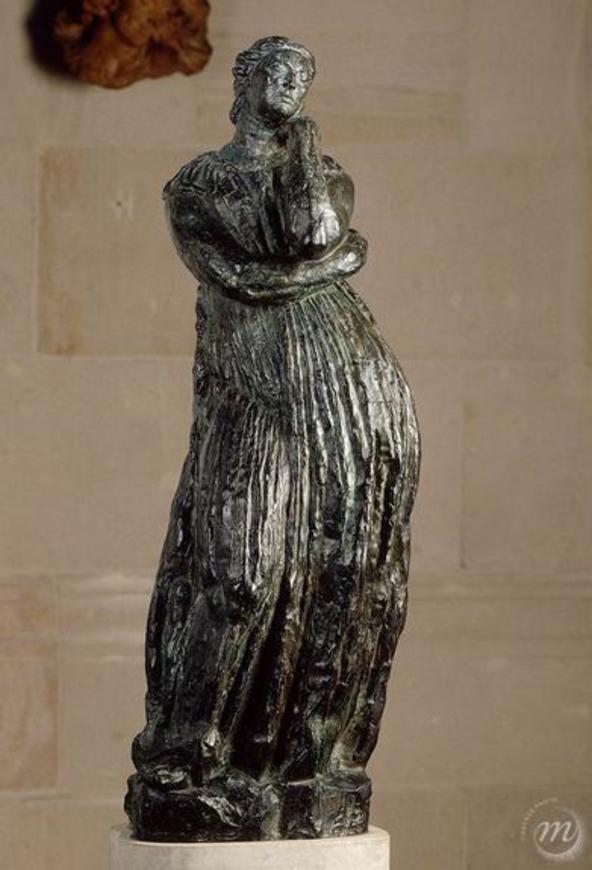In Homer's Odyssey, Penelope embodies the loyal wife awaiting the return of Odysseus for more than 20 years. This is, therefore, an allegory of fidelity and marital love. What is less obvious, on the other hand, is that beneath Penelope's features lie those of both Bourdelle's first and second wives.
In fact, the face was directly inspired by that of Stéphanie van Parys, his first wife, while the pose was taken from a sketch Bourdelle made of Cléopâtre Sevastos, in ecstasy before a work in the British Museum in London, where the artist brought his student in 1908. He married her in 1910.
The figure is massive, with generous volumes and details reduced to the essential. Only a few significant elements are exalted, like the crossed arms, signifying her expectation and a certain melancholy. The draping of the dress recalls that of the caryatids, statues of women often dressed in a long tunic which served as columns in the temples of Ancient Greece.
Penelope is the personification of the loved one and the sense of sacrifice that total love implies. Inspired by his own romantic history, the artist advocates for universal values that speak to everyone's hearts.
Penelope's pose is known as "contrapposto", which means that her body weight rests on a single leg, causing a sort of sway of the hips.
The disproportionality of the head, abnormally small in comparison to the rest of the body, reinforces the feeling of robustness.

In Homer's Odyssey, Penelope embodies the loyal wife awaiting the return of Odysseus for more than 20 years. This is, therefore, an allegory of fidelity and marital love. What is less obvious, on the other hand, is that beneath Penelope's features lie those of both Bourdelle's first and second wives.
In fact, the face was directly inspired by that of Stéphanie van Parys, his first wife, while the pose was taken from a sketch Bourdelle made of Cléopâtre Sevastos, in ecstasy before a work in the British Museum in London, where the artist brought his student in 1908. He married her in 1910.
The figure is massive, with generous volumes and details reduced to the essential. Only a few significant elements are exalted, like the crossed arms, signifying her expectation and a certain melancholy. The draping of the dress recalls that of the caryatids, statues of women often dressed in a long tunic which served as columns in the temples of Ancient Greece.
Penelope is the personification of the loved one and the sense of sacrifice that total love implies. Inspired by his own romantic history, the artist advocates for universal values that speak to everyone's hearts.
Penelope's pose is known as "contrapposto", which means that her body weight rests on a single leg, causing a sort of sway of the hips.
The disproportionality of the head, abnormally small in comparison to the rest of the body, reinforces the feeling of robustness.